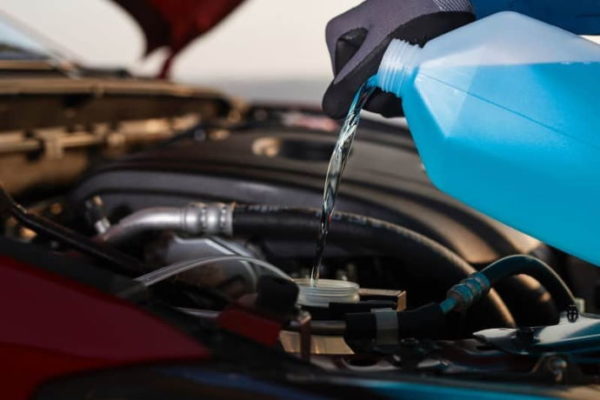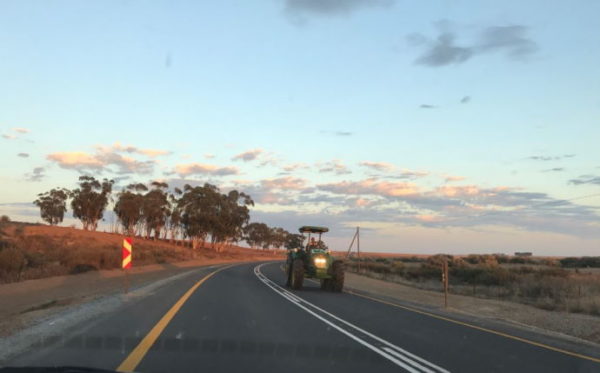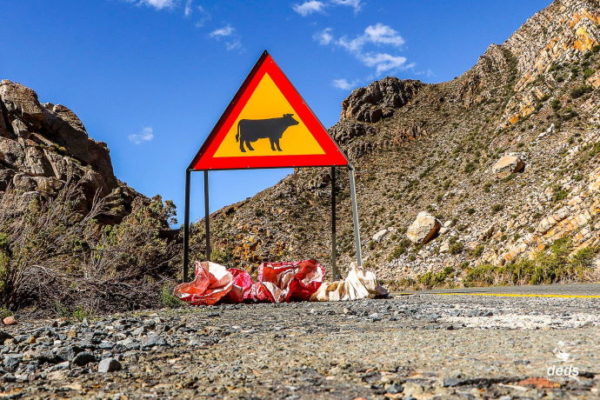Summertime in the Southern Hemisphere coincides with the festive season and end-of-year travels. It is well-known for long drives to our beautiful beaches as well as inland journeys to various nature reserves and game farms. It is a season we wish to celebrate with family and friends but also sadly a time when many lives are lost on our roads.
Summer requires that we be attentive and also focus on our driving behaviour and how it impacts ourselves and all those around us!
It is critical that we are calm and well-prepared for the journey and that we consider the unique dangers and challenges on and next to our roads. In this section, we wish to create more awareness about safety advice that will make the Summer road trip both enjoyable and safe.
Threats and Challenges on and next to the Roads during Summer
On the Arrive Alive website, we find a rather comprehensive section of content on driving during Winter. We focused on driving on snow and ice and the challenges of maintaining and driving our vehicles in the bitterly cold.
The warmth of summer is however not the time to switch of, simply relax and neglect our safety awareness. Some of the challenges include:
- Sharing the roads with drivers and pedestrians who are TOO festive, celebrating the festive season impaired by alcohol.
- Overheating leading to vehicle and bodily failure.
- Warm weather leading to severe thunderstorms and flooding.
- Holiday travels include long-distance travel to our destinations and the threats of driver tiredness and fatigue.
- Long-distance travels during the heat often impact the overall mood, contributing to increased fatigue, irritability and short-temperedness.
- Beautiful sunny weather invites the presence of other more vulnerable road users such as pedestrians, hikers, cyclists, motorcyclists etc.
- You may be sharing the roads with a wide range of vehicle types such as caravans and vehicles towing boats and other trailers.
- There is increased farming activity and a need for caution when sharing roads with tractors and farming equipment.
- Warm weather also contributes to more animal activity near our roads in their search for water.
Planning the Trip and Packing for the Summer Travels
The first part of safety is effectively planning the journey!
- Use navigation systems like Google Maps which also give you traffic warnings, and show congestion, accidents, and more.
- Planning ahead will also help you plan accommodation for an overnight stay if you need it.
- Rest well before you depart and start your journey refreshed.
- Plan to stop and rest every two hours or every 200 kilometres, and rest for at least 15 minutes. This will allow you to refresh and refocus for the rest of the journey.
- Your vehicle and your passengers could do with a break as well.
- If possible, share the driving workload with another licensed driver in the car. This will take your mind off the road and give you some time to mentally recharge.
- Don’t rush. Leave enough time to get to your destination well on time.
- Remember – During Summer you may be sharing the roads in congested traffic with many others heading on their holiday travels.
- Impaired vision from the sun is a common cause of road crashes during the summer. Be prepared.
- Use the overhead sun visors to help block out the sun from your eyes.
- Don’t forget your sunglasses – They can help you to avoid the sun’s glare, which may cause accidents as it impairs visibility.
- Open your windows. Even if your car is equipped with an air conditioner, open the windows every now and again to let fresh air in.
- Dress for the Summer drive – Dress comfortably for the car wearing clothes that allow for freedom of movement.
- Wear comfortable shoes for driving but be cautious of the dangerous summer footwear, avoiding flip-flops when you drive!
- Apply sunblock if necessary because your arms and legs may be exposed to the sun, even if you aren’t aware of it.
- Ensure that you have fluids to stay hydrated.
- Buy or assemble an emergency medical kit.
- Be ready to do quick repair jobs for roadside emergencies with basic supplies. Add some medication for heatstroke, bee stings etc.

Vehicle Components and Vehicle Maintenance during Summer
Vehicle roadworthiness is always important – irrespective of how short or slow the drive. There are some vehicle parts that may require a bit more scrutiny during Summer:
- The Windscreen: If you cannot see you should not drive! Windscreens also get very dirty in dry weather and marks can amplify sun glare.
- Windscreen wipers: Inspect and replace worn windscreen wipers if needed to help keep your windscreen clean. Wiper blades are vulnerable to the summer heat. Examine your blades for signs of wear and tear on both sides. The blades can also deform and fail to work properly in both directions.
- Windscreen washer fluid: Ensure you have the windscreen washer fluid to help you maintain a clear view in the sun.
- Sun shield: Use a windshield sun shield: Keep your car’s interior heat lower and protect your dashboard surface from the sun’s harsh rays with a sun shield. It’s also a good idea to park in shady areas.
- The cooling system/radiator: Have a qualified mechanic inspect your coolant system, including the radiator and pressure cap, to make sure they’re in good shape.
- Hoses and belts: Look under the hood and inspect all belts and hoses to make sure there are no signs of bulges, blisters, cracks, or cuts in the rubber. High summer temperatures accelerate the rate at which rubber belts and hoses degrade, so it’s best to replace them if they show signs of obvious wear. Check all hose connections to make sure they’re secure.
- Coolants, fluids and fluid levels: Keep your vehicle hydrated by checking for proper fuel levels and look for signs of leaks, especially of coolant. Consider bringing extra coolant, oil, and fluids along with you, especially if you’re taking a trip in a desolate area.
- Make sure each reservoir is full; if you see any signs of fluid leakage, take your vehicle in to be serviced.
- Oil: Oil changes are important year-round maintenance, but clean oil is especially important during the summer. Oil helps your car prevent overheating, lubricating moving parts safely.
- Air Conditioning: Check your air conditioning to avoid being subjected to dangerously hot temperatures inside the vehicle.
- Tyres and Tyre Inflation: Proper tyre inflation is always important for economical driving and saving on wear and tear.
- Tyres and preventing tyre blowouts: Keep your tyres running cool with the right amount of pressure to avoid a dangerous blowout. Use the manufacturer’s recommendation found inside your driver’s door jamb to determine the proper level for your tyre pressure. You should also visually inspect your tyres for irregular wear, low tread, and other problems.
- According to the AA, tyres with existing damage that are underinflated will become even more aggravated in higher temperatures, which increases the likelihood of blowouts and punctures.
- Battery: Have your mechanic check your battery, charging system, and belts, and have them make any necessary repairs or replacements.
- Vehicle cleanliness: Clean out your vehicle. Summer heat can melt or explode items in your vehicle that were once fine. Disposable lighters, batteries, and aerosol cans can be a hazard in a hot car. You should also watch out for messy items like chocolate or crayons.

Driving with Extra Caution in Summer
Once the trip has been planned and the vehicle has been checked, also focus on adjustments to be made to your driving style:
- Keep in mind that heat exhaustion can make drivers drowsy and easily fatigued.
- Do not push yourself or your vehicle past the limit – that only makes it unsafe for everyone on the road.
- Slow down: Hot weather puts a higher load on your vehicle, so pushing it to drive at high speeds can wear it down even further.
- Drive within the speed limit to reduce the wear on your vehicle and practice safe driving habits simultaneously.
- Combat driver fatigue by taking frequent breaks, and paying attention to your vehicle’s warning signs to prevent vehicle breakdowns and malfunctions.
- Keep an eye on the temperature gauge: If your vehicle’s temperature gauge starts to tick up out of control, you need to get help, as your engine is at risk of overheating. If your gauge is in or near the red zone, you have to stop driving, as your engine is overheated.
- Look out for potholes: After the winter season and during the rain, expect to find more potholes. Know the roads you’re on, and keep an eye out for dangerous potholes.
- Stay alert to battery strain: Hot weather is tough on batteries. Look for signs of a failing battery, including dim lights when you start up, power drains when you turn on your air conditioning, and slow cranking on start-up. If you see these signs, take your battery to an auto parts store that offers free battery testing.
- Do not overload your car: If you’re headed out on a road trip, you may be ready to throw lots of luggage and gear on top and in the back. Be careful not to exceed your vehicle’s acceptable load limit.
- Drive with caution in areas of road construction: Road construction work often increases in the summer months. Keep a watchful eye out for construction zones and be careful to obey all signs, and watch for workers on the road.
- Remain cautious of workers cutting grass and doing vegetation control at the side of the road.
- Watch for more vulnerable road users: Drivers have to share the roads with a lot more than just other cars during the summer months. Better weather and longer days attract far more tractors, caravans, horse riders, cyclists, walkers and joggers.
- Bikes and motorcycles often come out more frequently in the summer months. Keep an eye out for them and give them plenty of space.
- Be cautious when overtaking trailers, caravans and tractors.

Hydration during the Heat of Summer
The risk of dehydration is not limited to leaving children, the elderly and pets locked inside vehicles during the heat of Summer. Our cyclists, hikers, mountain bikers, trail runners and other outdoor enthusiasts are all at risk of heat exhaustion and dehydration.
- Focus on the most vulnerable among us. Children can die within minutes if left inside a parked car during the summer.
- Never leave children alone in parked vehicles, even if your windows are rolled down, and the air conditioning is on.
- Keep your doors locked and keys out of the reach of children.
- Have plenty of fluids at hand to prevent dehydration.
- Know the symptoms and signs of heat exhaustion and dehydration.
- Symptoms of heat exhaustion include sweating, dizziness, nausea and a fast pulse.
Keys to preventing heat exhaustion and heat stroke:
-
- Drink plenty of water
- Do not exert yourself outside in hot temperatures
- Avoid the midday sun
- Avoid excessive alcohol outside in hot temperatures as this leads to dehydration
- Wear sunscreen, as sunburn contributes to a rise in body temperature
*Originally shared on Arrive Alive
Pictures: Supplied | Unsplash






